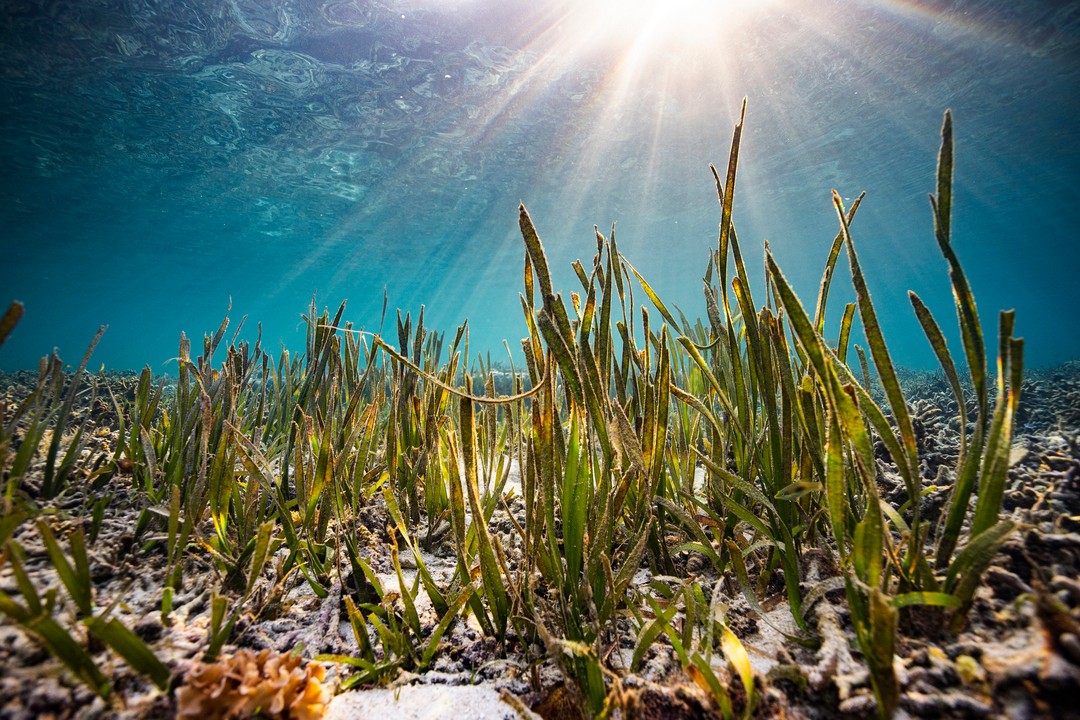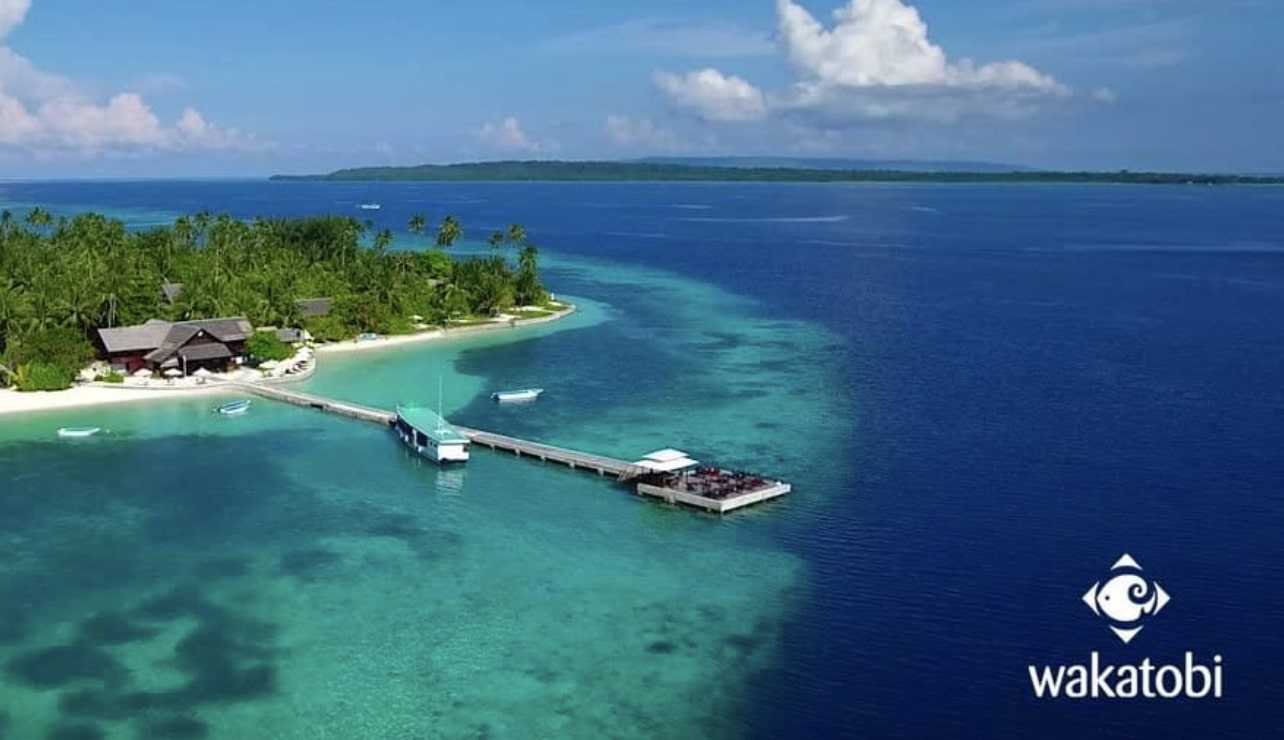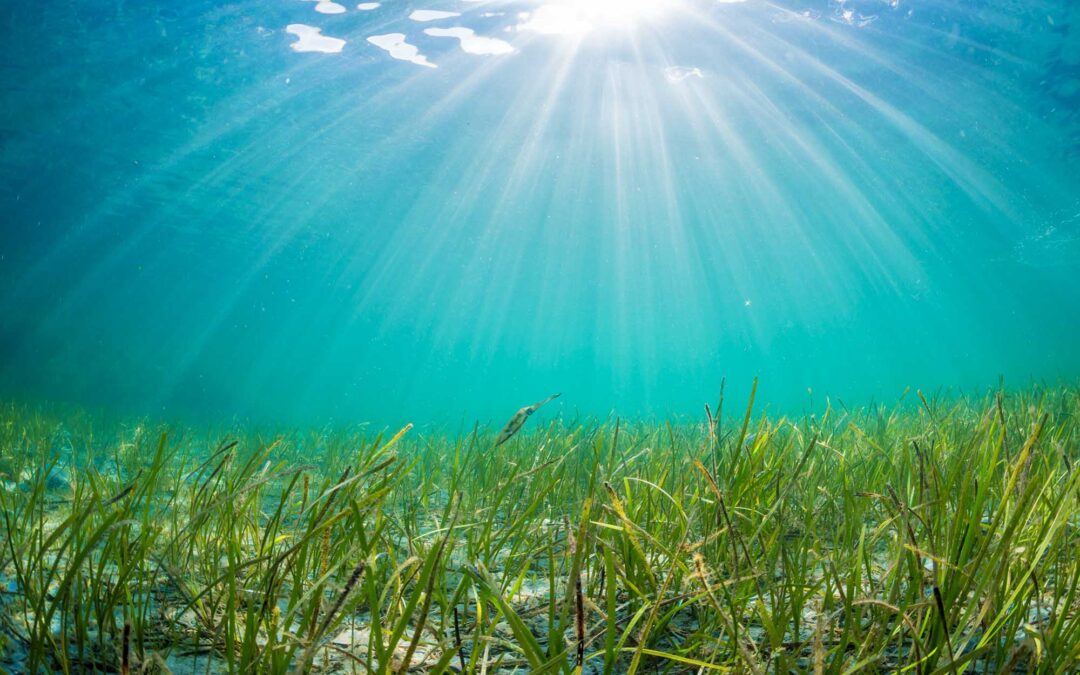The seagrass ecosystem is built by a terrestrial plant that evolved and can live underwater. Seagrass is like plants on land they have leaves, roots, flowers, seeds, and connective tissues, but they don’t have a solid trunk to support their whole body, so they depend on the buoyancy of the water to hold themselves up. The seagrass produces its own nutrients by photosynthesis. Through this process, they absorb carbon dioxide and turn it into oxygen. So, the seagrass is one of the most important ecosystems to reduce global emissions and fight climate change. By absorbing 35 times more than the rainforest with the same size area even though they only cover 0.2% of the sea floor. With the huge amount of carbon absorbed, seagrass is an active carbon storer. They store a tremendous amount of carbon in our seas (this is known as blue carbon). They also home to a variety of marine organisms, they support so many species of fish, squid, blue crabs, shrimp, octopuses, oysters, anemones, sea urchins, sponges, clams, sea turtles, and even marine mammals like dugongs and manatees use them as their source of food.

The seagrass actually is not grass at all, they are actually more related to lilies and gingers than grass. There are 12 seagrass species in Indonesia, and 10 can be found in Bali. Local people in Bali collect seagrass as a mix of nutrients for their cattle. Besides carbon dioxide absorption and use for nutrients, seagrass still has a lot in storage for us.
Even though seagrass has much to offer, it doesn’t make them resistant to threats. Globally, 30,000 km2 of seagrass has been lost in the last couple of decades which is equal to 18% of the global area. Seagrass is increasingly threatened by human activities such as urban, industrial, and agricultural run-off; coastal development; dredging; unregulated fishing and boating activities; and climate change. In Indonesia, the main culprit is coastal reclamation and development, oil pollution, sand and coral mining, seaweed farming, sedimentation, deforestation, overfishing, poor water quality, and waste. Human activities on low tides also can be a threat. Those activities listed above can remove 2-5% of seagrass per year.

To protect the seagrass Indonesian government has taken some action. In some part of Indonesia, the government and local community has made a fishing moratorium called “sasi.” There is also some part of Indonesia’s ocean area that is been established as a Marine Protected Area (MPA). MPA areas such as Wakatobi Island and Buton Regency in Southeast Sulawesi Province have delivered a successful result as the increase of seagrass cover. But there is also some MPA area that is still dropping their seagrass cover, like North Nias, North Sumatra, and Biak Numfor, Papua.
All images are subject to copyright to their respective owners and not owned by ZeroWaste Center by R.O.L.E. Foundation.


Recent Comments